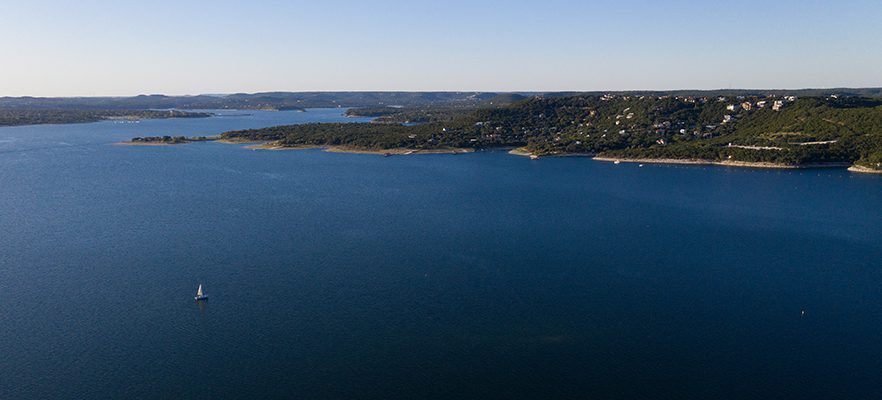The Highland Lakes and Colorado River

The Highland Lakes on the lower Colorado River northwest of Austin sit in an arid part of Texas that is prone to both floods and serious droughts. Two of the lakes – Buchanan and Travis – are the region’s primary water supply reservoirs.
Lakes Buchanan and Travis were designed to fluctuate, going up while capturing water during rainy times and going down as water is used or evaporates when the weather turns drier. The lakes have provided a reliable water supply for Central Texas since Lake Travis was completed in the 1940s.
After years of severe drought and low inflows into the lakes, flooding rains in early July 2025 increased the combined storage of the lakes from 51% to more than 90% of capacity over several days. The last time lakes Buchanan and Travis were full was in July 2019.
Lake levels
How full are the lakes?
Managing the water supply
How LCRA manages the Highland Lakes and lower Colorado River
Dams and lakes
Information on the six Highland Lakes and dams
Hydromet & weather conditions
Interactive map and report on rainfall and more
Current conditions
River Operations Report
Daily report on routine water supply operations at the dams, lake levels and short-term lake level projections.
Inflows into lakes Buchanan and Travis (.pdf)
August inflows totaled 23,228 acre-feet, which is about 41% of the August historical average and about 103% of the August historical median.
Lake levels
Current lake level information.
Basin streamflow summary
Current streamflow data in the basin.
Historical lake levels
Daily lake levels and combined storage (.pdf)
Lake Buchanan (.xls)
Inks Lake (.xls)
Lake LBJ (.xls)
Lake Marble Falls (.xls)
Lake Travis (.xls)
Lake Austin (.xls)


Social Media